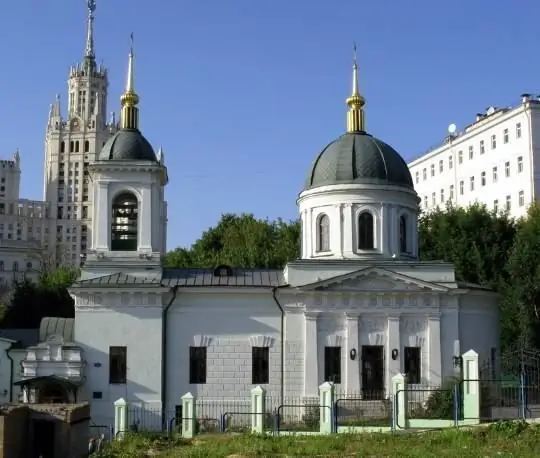
Description of the attraction
The first church that stood from the middle of the 16th century on the site of the present Nikolsky Church in Kotelniki was the Church of the Holy Trinity in Starye Kuznetsy. The church was built in the lower part of the Shviva (also called Vshiva) hill - the southwestern slope of Tagansky hill. Representatives of several flammable professions were resettled to this place, including boiler-smiths, who produced useful utensils. Several Moscow streets got their names from the name of their settlement, including the 1st Kotelnichesky Lane, in which the Church of St. Nicholas the Wonderworker stands.
In the first half of the 17th century, the Trinity Church burned down, and in its place the construction of a new church began - first wooden, and after the middle of the century - stone. The funds for the construction of the capital building were provided by the Stroganov merchants. The Nikolskaya Church became their ancestral burial vault and therefore was rebuilt again with their money - towards the end of the 17th century.
In the 19th century, the temple was damaged during the Patriotic War, and its restoration began only ten years later and was carried out at the expense of Prince Sergei Golitsyn with the participation of architects Osip Bove and Domenico Gilardi. The consecration of the renovated church, the building of which now possessed the characteristic features of the Empire style, took place in 1824. Also in the 19th century, another side-chapel was built in honor of the Great Martyr Evdokia, and at the end of the century another reconstruction of the building took place.
After the church was closed in the 30s of the last century, part of its values ended up in the Kolomenskoye museum, and the rest was lost. The building lost its crosses, domes, decorative elements and took into its walls one of the laboratories of the geological expedition. In the 70s, the building was recognized as an architectural monument and was partially restored. It was returned to the Russian Orthodox Church in the early 90s, and in 1998 the temple became a courtyard of the Orthodox Church in the Czech Republic and Slovakia, and it is also a courtyard of the Patriarch of Moscow and All Russia.






